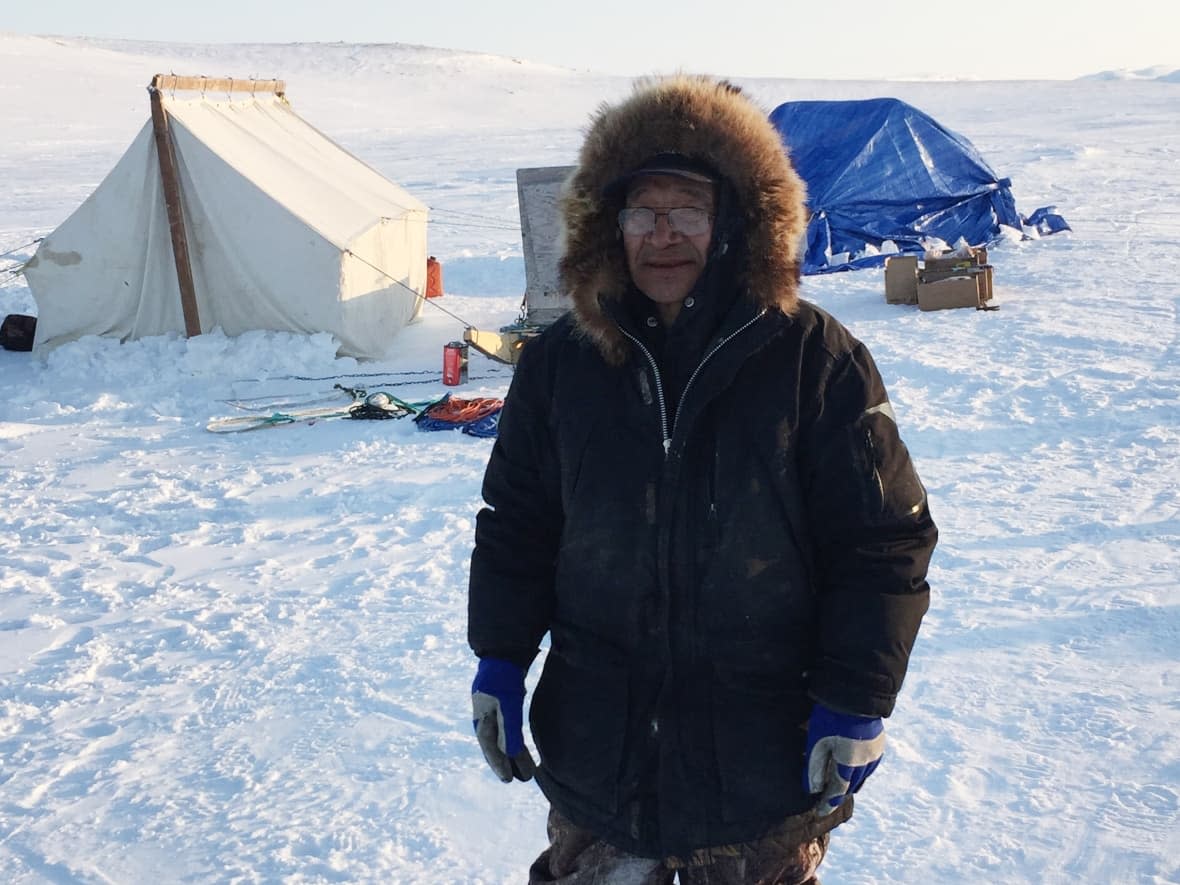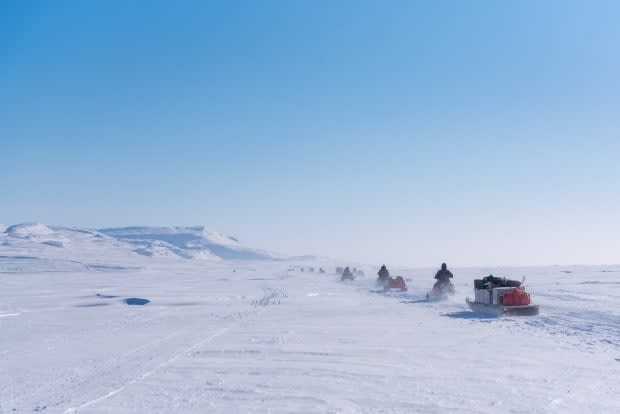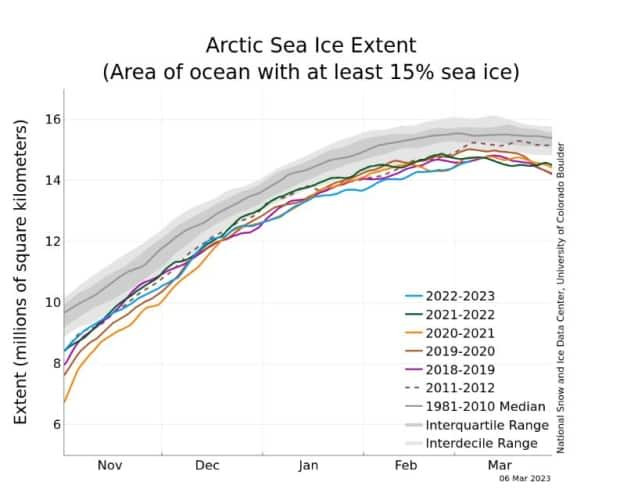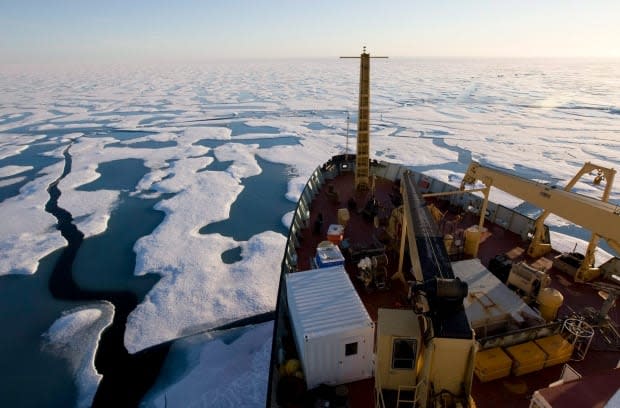Travelling on broken ice: Inuvialuit elder, scientist describe the Arctic's shrinking ice cover

The condition of the sea ice around Ulukhaktok, N.W.T., has been "really good" for hunting and long-distance travel this winter, according to an elder living in the Arctic community.
But Robert Kuptana said it isn't always like that. In fact, the long-time hunter and trapper said, for the past few years there has been a lot of what he calls rough ice.
"It has to do with the temperature," he explained. If it doesn't get cold enough, the ice isn't strong when wind and ocean currents push against it, he said. That can cause the ice to break and for ice fragments to jumble up across a wide area without any order, making it difficult for snowmobiles to navigate.
Kuptana, 80, also pointed out that "you don't see thick ice anymore."
Arctic sea ice grew until March 6 this year, covering 14.62 million square kilometres — nearly 1.5 times the size of Canada — at its peak, according to the National Snow and Ice Data Center (NSIDC) in Boulder, Colorado.
The sea ice's maximum extent is smaller, and came earlier this year, than the 30-year average, according to the NSIDC.
WATCH | A NASA animation of Arctic sea ice extent this winter:
But Mark Serreze, NSIDC's director, says the volume of the ice — like Kuptana's observation about how thick it is — is a better indicator of the health of the ice than the area it covers.
Too warm for thick ice
Serreze says the health of the Arctic ice cover is "not very good."
"If you look at the Arctic Ocean, it used to be you'd find some ice in there that was like 10 years old … It would tend to get quite thick, old and thick. But most of that's gone."
And it's unlikely to grow back in the future, Serreze says.
"Partly it's melted away, partly it's gotten flushed out of the Arctic Ocean into the North Atlantic where it would melt. But just about all that's gone. It doesn't look like we're going to get it back. It's just too warm to get it back," he said.

Serreze says sea ice cover was "really low" this winter in the Barents Sea, off the northern coasts of Norway and Russia. In the Beaufort Sea, north of the Northwest Territories, there have been some of the biggest losses of summer sea ice, he said.
When ice survives a summer, it turns into "multi-year ice" — the stuff Serreze said can grow old and thick. If there is no summer sea ice in the Beaufort Sea, it means the "seasonal" ice that forms in the winter is relatively thin.
Serreze said that's why Kuptana is seeing more rough ice lately. The deformations Kuptana described — ice crushing and piling up — is more common with thinner ice.
Disappearing summer sea ice
Not all Arctic sea ice behaves the same way. In contrast to dwindling summer sea ice on the Beaufort Sea, Serreze said the shores of the Canadian Arctic Archipelago, north of Ellesmere Island, are expected to be the "last refugia" of summer sea ice.
"In other words, where the ice hangs out to the bitter end," he explained.
"That's because the basic circulation of the sea ice cover packs the ice up against the shore there. If you went to the north side of Ellesmere Island, where Alert is, even in the summer, the ice is going to come up right against the shore. And that's where the thick ice is."
Scientists expect summer sea ice to completely disappear in the Arctic, but Serreze said it's hard to know when, exactly, that could happen.

A report from dozens of scientists at last fall's COP27 climate conference said it was expected to happen at least once by 2050. According to that report, how often the Arctic is ice-free, and for how long, depends on how warm it gets.
Serreze said the speed at which the planet is warming, the temperature it could reach, and what humans are going to do about their greenhouse gas emissions, are all going to influence when summer sea ice disappears.
"The reality is we are learning as we are going along, and that's what I think a lot of people have to remember," said Serreze. "We are undertaking a grand experiment which we have never embarked on before."

Kuptana's son, Travis Kuptana, who said he'd be turning 40, hasn't experienced any "dramatic differences" on the sea ice in his more than 15 years hunting for polar bears. He and Robert operate a business in Ulukhaktok called Arctic Outfitting Adventures.
The younger Kuptana says the ice cover is critical to his business and his community. He's worried it'll be broken up by the shipping industry — blocking access to areas they may want to hunt.
The opening of the Arctic ocean could make the area more attractive for shipping routes.
"The last thing we need is for icebreaker ships to come through," he said. "There's a lot of us guys that don't have full time jobs, that are hunters, that hunt for a living … to support our family."


